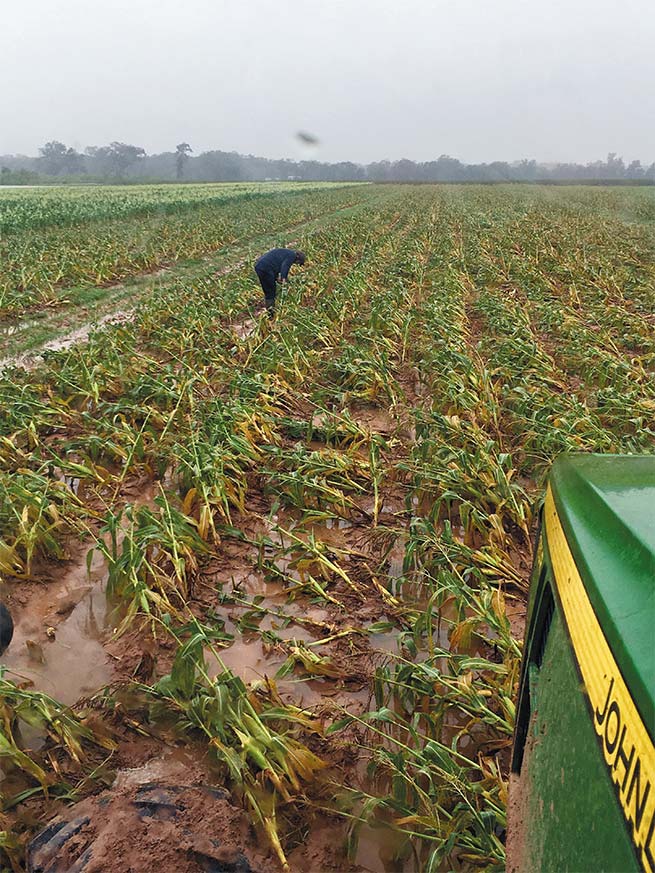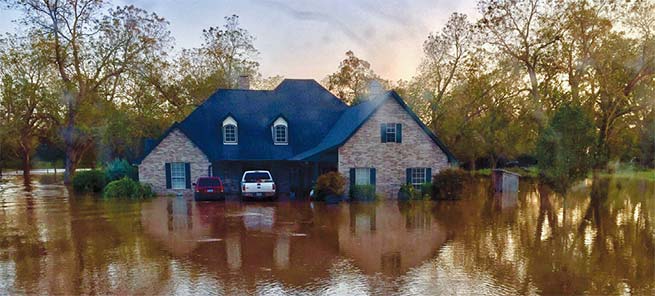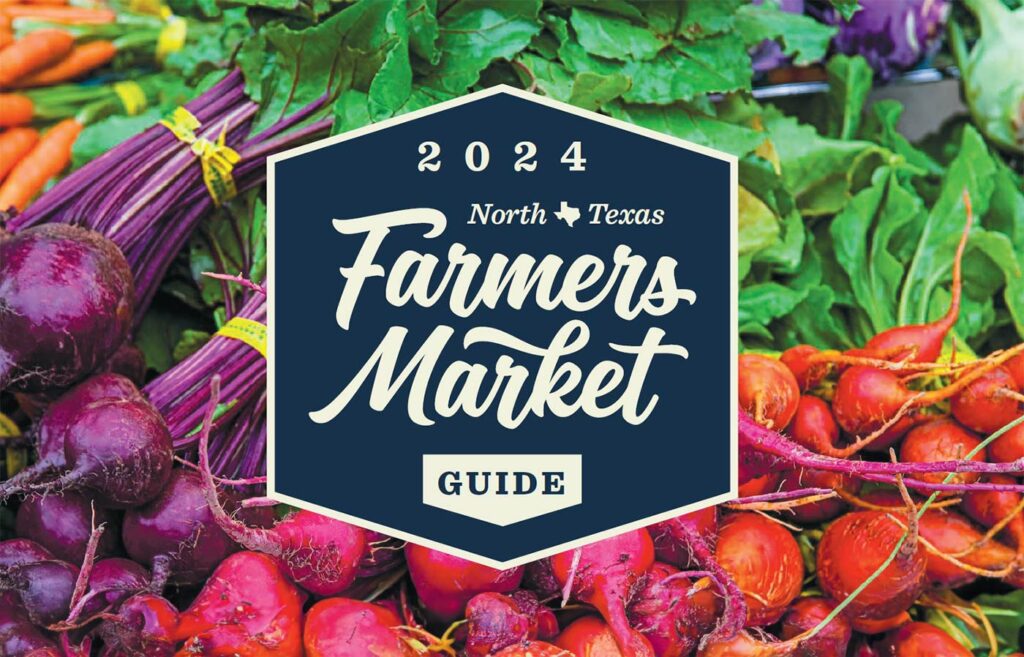
Garrett Gundermann surveys field of sweet corn destroyed by Hurricane Harvey’s winds. Two days later, the field was engulfed in six-feet of water after unremitting rain.
Garrett Gundermann returned my call from the field four days after Hurricane Harvey left 490 acres of his 500-acre farm in Wharton County under water. He was taking a break from ripping the sheetrock out of his flooded home to plant fall greens on his little bit of high, drying ground. “I’m just trying to get back to some kind of normality,” he explained.
This would be the year’s third planting at Gundermann Acres with no harvest to show for it. In February, the first crop was decimated by a 14°F freeze. The second rotted in a powerless refrigerated pack house, now the third in water-laden soil. Without crop insurance, which Gundermann does not have, 2017 will be a total loss. What he had hoped would be a good year after many bad ones instead will leave him begging for loan forgiveness and looking to sell part of his farm to make ends meet.
At Whitehurst Heritage Farms in Brenham, beginning farmers Michael and Leslie Marchand also understand the challenges bad weather brings. In only 18 months, the couple suffered through the same three flooding events that have put Gundermann Acres in dire straits. That all of their farm animals are raised on pasture or freerange in forested areas, without fixed housing, made the Marchands especially vulnerable during Hurricane Harvey. They lost more than 200 chickens—three tractor loads—to drowning and shock.
“It’s very sad for a farmer,” said Leslie Marchand. “Day by day you care for these animals.… It takes eight weeks to raise a meat bird, five months before a chicken lays its first egg, so you’re with them for a very long time.”
Hurricane Harvey set the record as the largest rain event in the state’s history, dumping more than 15 trillion gallons and up to 50 inches of rain on coastal Texas. And while Texans are no strangers to extreme weather—floods, droughts, hail, hurricanes, tornadoes and heat waves—most agree that the severity of these weather events is getting worse.
Even small shifts in temperature or rainfall can be bad news for farmers. They may lose crops to early or late freezes or have their planting delayed by an unusually cool, wet spring. Downpours can make fields impassable, prohibiting harvests and forcing producers to leave crops, and profits, to rot. Longer droughts reduce water availability for irrigation, reducing yields, and warmer winters keep insect pests alive from one season to the next. And of course, recordsetting storms can obliterate farms overnight.
Nelson Carter at Cartermere Farms in Celina put it like this, “We hit the 100-year floodplain twice in one year. Twice! That’s supposed to take 200 years!” (The statistic refers to odds: a 1-in-100 chance of occurring in a given year.) At one point, flooding on his farm was so bad that he had geese swimming in his onion patch. That was after a year so dry he could drive a car along the bottom of his 35-acre lake.
The weather at John Kilburn’s Comeback Creek Farm in Pittsburg has also been erratic. “One thing you can count on in Texas is hot, dry summers—it wasn’t hot or dry this summer.” John lost entire crops of summer squash, zucchini and okra to mold, fungus and moisture-loving aphids as a result of the unprecedented humidity.
In Celeste, Paul Magedson of Good Earth Organic Farm described dealing with an infestation of hungry grasshoppers during one particularly dry year which cost him not only his vegetable crop, but also the screens off his windows.
The financial impact of losing a crop or livestock is greater than the immediate loss of sellable product. Pedro Schambon, also affected by Hurricane Harvey at My Father’s Farm in Seguin, explained that farmers also lose the 40 to 60 days that it took to grow a squash or raise a meat bird, plus the 40 or 60 days to do it again. That means months without making a dime—all while paying insurance, employees and loans.
On top of the financial blow, such devastating losses take an emotional toll. This was evident in the waver in Schambon’s voice as he described tilling in thousands of baby radishes destroyed by frost, in Gundermann’s as he walked me through the moment he realized all was lost, and in Leslie Marchand’s as she live-streamed her third haul of dead chickens.
Cruel as the weather may be, however, none of the farmers I spoke with chose to linger on it. “You can fight Mother Nature and you’ll lose, or you can learn how to dance with her—just know, she always leads,” explained Carter. Texas farmers are up against so many challenges, from feral pigs to labor shortages to struggling markets, that the weather plays no singular role in keeping them up at night.
Overwhelmed by this myriad of hardships, I couldn’t help but think— and ask—why not quit altogether? Fina Longoria at Happy Trails Farm in Italy answered me simply, “Someone has to grow food.” Even Gundermann, his farm almost completely under water, told me, “You just can’t think that way. You need to pray, have faith and keep going.”
Seemingly straightforward, underlying these farmers’ responses is a deep love for their work and more importantly, a profound dedication to not just growing food, but to feeding people, supporting communities and caring for our planet. Their resilience is a sacrifice so that we may eat healthily, breathe fresh air and enjoy clean water. We can and should reciprocate that gift by giving them our support not just in the aftermath of a natural disaster, but every day. How? Go to a farmers market. Go to a farm. Know how your food is grown and raised and meet the person doing it. Understand that your dollar is not just a dollar—it’s a choice and your opportunity to help Texas farmers weather the storm.

DONATIONS:
Disaster Relief Fund—TOFGA
(Texas Organic Farmers and Gardeners Association)
Tofga.org
Gundermann Acres—Harvey Relief
youcaring.com/gundermannacres-931565
Farm Aid Family Farm Disaster Fund
farmaid.org/our-work/family-farm-disaster-fund
- This author does not have any more posts.











